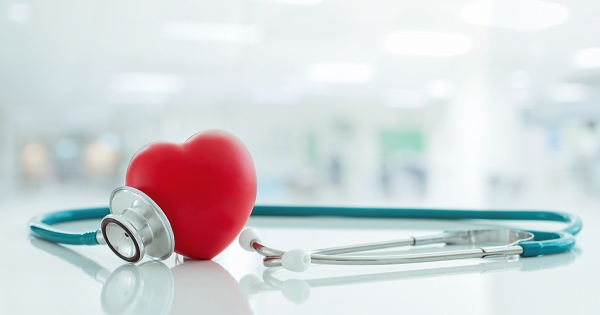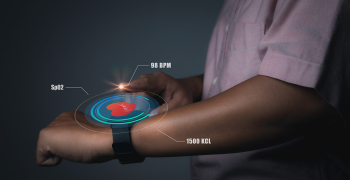Non-Invasive Blood Pressure Monitoring for Transforming Hypertension Care

Hypertension, also referred to as high blood pressure or elevated blood pressure, has emerged as a “silent killer.” It is a chronic medical condition in which the blood pressure is consistently higher than normal, pushing on the artery walls and resulting in severe health problems such as heart disease and stroke.
Since there are no external warnings or indications of hypertension, it is critical to monitor one's blood pressure on a regular basis. Hypertension is diagnosed when the systolic blood pressure readings are ≥140 mmHg and/or the diastolic blood pressure readings are ≥90 mmHg same for two continuous days (Figure 1).
Around 1.28 billion people between the age of 30 to 79 worldwide have hypertension, with the majority (two-thirds) living in low- and middle-income countries.

Measuring Blood Pressure: The Need for a Smart Solution
Blood pressure is expressed as a two-digit figure. When the heart contracts or beats, the first number (systolic) shows the pressure in blood vessels. The second number (diastolic) indicates the pressure in the arteries while the heart is at rest between beats.
Traditional, non-invasive blood pressure cuff technique comprises of using an armband – the cuff – that is inflated by a pump. Once the cuff has been inflated sufficiently to stop the pulse, a reading is acquired, either electronically or on an analog meter.
However, the measurements taken are normally for 2-3 minutes, which is now considered insufficient time for continuous monitoring. Further issues arise from the cuff's size, positioning, inflation, frequency, and tightness –challenges that are especially common in automated blood pressure monitoring device. Using a blood pressure cuff can also lead to bruising, swelling, nerve damage, capillaries bursting, and other medical issues.
The alternate, an invasive procedure called IBP monitoring, is performed on patients who are critically ill or undergoing surgery. This is typically performed using a catheter inserted into a peripheral artery such as the radial, brachial, femoral, or dorsal pedal arteries. The main disadvantage here is the invasive nature of the procedure, which can cause infection and distress to the patient if not managed carefully.
We therefore need a smart solution which can help overcome the inherent challenges of the existing invasive and non-invasive methods for monitoring blood pressure.
Towards Cuffless Monitoring
A cuff-free (“non-cuff”) technique for blood pressure monitoring utilizes pulse transit time technology to provide continuous and precise BP readings without a need for user intervention. This system offers a straightforward methodology through portable blood pressure monitors without a pressure cuff, and is both quick and accurate - allowing physicians to measure arterial pressure constantly and non-invasively.
PTT (pulse transit time) is non-cuff method for measuring continuous blood pressure. It refers to the period between identifying the R wave on the ECG and the mechanical activity of the pulse wave at a peripheral point on the artery tree. The ECG and PPG (Photoplethysmogram) signals of the individual are obtained using ECG leads worn on the chest and a PPG sensor on the figure tip. The PTT is computed based on the person's physiological indications.
PTT cuffless blood pressure monitoring can therefore reduce the requirement for arterial lines in clinical settings and prove useful in terms of gathering long-term BP insights. The ability to do away with invasive monitoring is an added bonus.
What does this Involve?
This proposed method is based on an algorithm to estimate blood pressure based on the pulse waveform obtained from the patient’s finger. After getting the coefficients, the ECG and PPG data may be used to calculate a new PWV (pulse wave velocity).
The following equation is used to calculate the NIBP value:
Systolic blood pressure (SBP) = a*(PWV)
Diastolic blood pressure (DBP) = c*(PWV) + d
The following steps are involved in the proposed technique:
- Connecting the electrodes to the subject
- Placing the finger on the PPG sensor
- Using ECG and PPG signals, record PWW measurements from the individual
- Entering the subject's metrics into the UI, including the BP number from the cuff and the matching PWV value
- Execution of the NIBP script to retrieve the subject's NIBP values
- Checking the SBP and DBP using a real-world BP machine
Towards Non-Invasive and Continuous Blood Pressure Measurement
The current BP devices are big and do not provide non-invasive, continuous measurement. A smart cuffless blood pressure monitoring solution, providing continuous and non-invasive blood pressure readings using ECG and PPG signals, can therefore help transform the current paradigm. It may also be readily connected with wearable devices and patient monitoring systems for continuous non-invasive blood pressure monitoring in the home care and hospital context.
Only then would we have a chance to stem the menace of hypertension.




